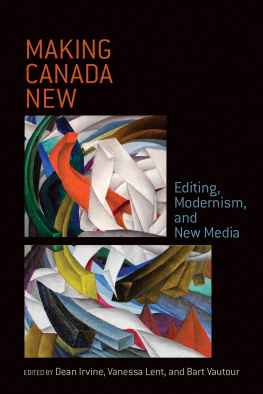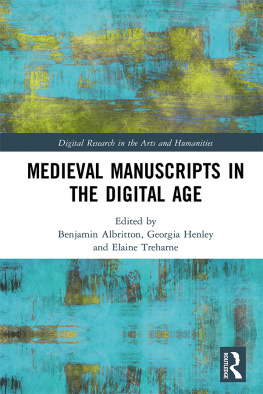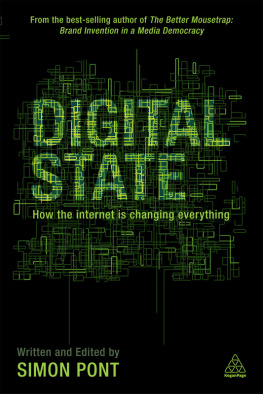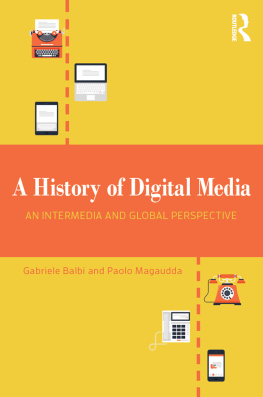Renovating the New
The act of making is the core of critical editing and textual scholarship. So, too, is making one of the leading tropes of literary modernism. MAKE IT NEW (Cantos 264), Ezra Pounds most-famous exhortation and modernisms most-quoted slogan, is an axiom whose transmission and translation across multiple languages, cultures, and millennia has invited perennial interpretation. Although commonly attributed to Pound, the catch phrase isnt his own. While its genealogy is already well known to Pound scholars, its lineage is even more remarkable for its relevance to the formative meeting of editing and modernism. Even though his interest in Confucian texts began as early as 1913, the earliest source of the phrase is his 1928 translation of the Da Xue, first of the four books of Confucian moral philosophy. Readers of The Cantos will recognize the correct attribution to Tseng Tze, the commentator on and annotator of Da Xue, who relates an anecdote about Cheng Tang, the emperor who reportedly had the original inscribed on his washbasin (North, Novelty 164). Tsengs editorial function is reproduced by Pound in his earliest translation, in which he glosses his idiomatic Americanized translation (Renovate, dod gast you, renovate! [Ta Hio 12]) from Guillaume Pauthiers French version with still another English translation (Renew thyself daily, utterly, make it new, and again new, make it new [Ta Hio 12]). That modernism sprouted its most recognizable motto from an editorial footnote, a commentary on a translation, is not only apposite to Pounds legendary pursuits as one of the periods most influential literary editors but also pertinent to the fact that so many of the modernists engaged in editorial activities from avant-garde and commercial magazines to small literary presses and trade publishing houses (Bornstein, Introduction 1). For many, modernisms imperative to make it new may have become a mantra to innovate, but its editorial origins resound with the call to renovate. With its emphasis on the conjuncture of editing and modernism, Making Canada New foregrounds this calling towards renovation as a mode of scholarly practice.
Pounds injunction saw its currency inflated retroactively, not at the moment of Anglo-American modernisms ascendancy in the 1920s, but during the second half of the twentieth century (North, Novelty 10). The Making of Modern Poetry in Canada (1967), Louis Dudek and Michael Gnarowskis influential edited collection, and The Pound Era (1971), Hugh Kenners landmark study of the men of 1914, are signposts of this dominant, masculinist, high modernist, Poundian critical tradition. This period started off with the consolidation of canonical authors and movements and shifted towards the interrogation of exclusionary processes in academia and scholarly publishing that fashioned the mid-century contours of modernist studies. With the recent renovatory drive in modernist scholarship, one that continues to act upon the Poundian imperative, the discipline has reconstituted itself since the turn of the century under the mantle of new modernisms (see Mao and Walkowitz, Bad and New; Irvine, Spectres). This global reconceptualization of modernist studies under the sign of the new extends from its aesthetic preoccupations with and trafficking in tropes of innovation, novelty, invention, and experimentation. Among the results of these disciplinary renovations have been the expansion of spatial and temporal boundaries and the recognition of plural modernisms, a reconfiguration that acknowledges the uneven geographic and chronological distributions of cultural modernity and, consequently, accommodates Canadas mid-century modernists. Instead of periodizations predicated upon notions of cultural belatedness, or narrativizations that identify emergent, marginal, or peripheral modernisms in relation to a dominant, originary centre, the push towards new modernisms has not only opened up the field of transnational modernisms to embrace Canadas early to mid-century cohort but also coincided with the resurgence in Canadian modernist studies over the past two decades.
Part of that renovatory activity comprises the restorative labour performed since the millennial turn by new histories of literary modernism and modernist print cultures in Canada; these revisionary studies call attention to the omissions and distortions endemic to editorial mediation, which begin with the modernists themselves working as editors of magazines, anthologies, chapbooks, and books and extend to their publication of retrospective collections and revised versions of early texts towards the end of their careers or, in some cases, posthumously. In the absence of critical editions, the responsibility to sort through these editorial acts and the cultural narratives to which they contribute has often fallen, at least initially, to the historians, biographers, and bibliographers of Canadian modernism. These modes of commemoration and documentation may be subsumed later on by editors preparing scholarly editions; each stage represents the multiple and overlapping ways in which the renovation of modernism takes place. Revisionary criticism such as Brian Trehearnes











 Printed on acid-free, 100% post-consumer recycled paper with vegetable-based inks.
Printed on acid-free, 100% post-consumer recycled paper with vegetable-based inks.